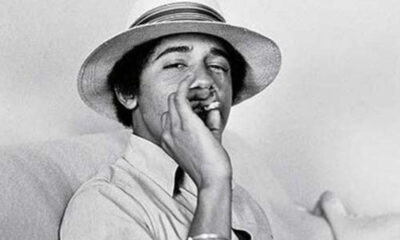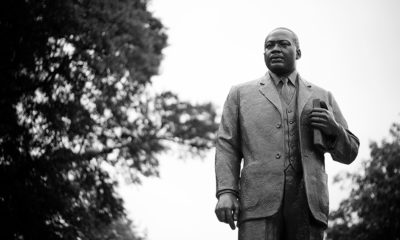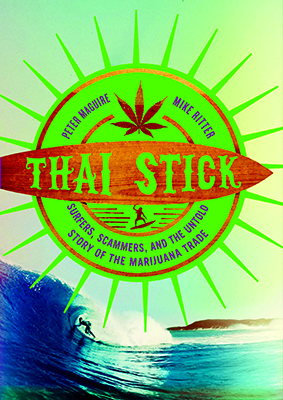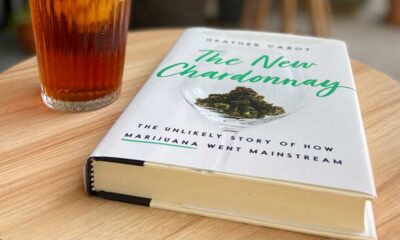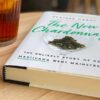Book Review: Thai Stick
This book is highly recommended for anyone who loves adventures, cannabis, surfing or all of the above. It’s every single bit as heady, energetic and captivating as its title implies.
First heavily trafficked in the ’60s and ’70s by industrious, traveling surfers and returning war veterans, Thai Stick (so named for its origin and the fact that the bud was literally tied to a stick) was a highly-profitable industry and the holy grail of cannabis lover’s the world over. Told in an entertaining and scholarly manner, authors Peter Maguire and Mike Ritter relate this fascinating period in the history of pot smuggling through interviews with the pioneers of the legendary Thai market.
Maguire, a seasoned war crimes investigator whose resume includes coverage of the Killing Fields in Cambodia, and Ritter, a career marijuana smuggler, expertly depict real events unveiling how the Thai cannabis trade came into existence. The authors carefully unravel the untold history of Thai Stick’s journey from the perspective of the smugglers involved, rather than the incomplete record left behind in Drug Enforcement Agency file cabinets.
The duo – in conjunction with Columbia University’s Center for Oral History – say they were interested in “capturing the voices of the voiceless group that was conspicuously absent” from the historical telling of the time. They set out to better understand the historical currents that moved some of the Baby Boomer generation to engage in the dangerous and uncertain world of pot smuggling.

Enterprising surfers and fearless waterman (and a few waterwomen) figure majorly into the storyline, as it was Southern California surfers who initially, while chasing an endless holiday of perfect waves, found exotic cannabis strains abroad. They were sure that back home the cheap weed would make them filthy rich. The authors note that a majority of the pre-Thai Stick pot that flooded California at the time came via Baja Mexico – just a few miles south of San Diego – where surfers enjoyed primo waves at surf spot K38, beers at Hussong’s Cantina and returned with “a kilo of weed stuffed in the door panels of mom’s station wagon.” A few anxious moments at a border crossing could fund several years of living out the surfer dream of an endless summer in exotic locales.
A majority of the smugglers were surfers, sailors and pirates – also known as “scammers” for the illicit work they performed – while others were decorated combat veterans hitting the beaches at midnight with mega-tons of weed in Zodiacs. Most had creative minds and were strategic thinkers who could problem solve on the fly. It was no coincidence that so many surfers chose the profession – surfers were a fearless crew able to think fast on their feet while being chased by giant mountains of moving water. More often than not things did not go as planned. The occupation required a fluid mind to problem solve last minute shake-ups, including run-ins with thieves, Kymer Rouge patrol boats and the Vietnamese Navy.
A colorful part of the story includes a collection of drug enthusiasts and profiteers known as The Brotherhood of Eternal Love, an intriguing set who were the leading manufacturers of LSD and importers of hashish. Known alternately as the Hippie Mafia, the Brotherhood preached rebellion through psychedelia as a sacred rite of passage and cultural revolution.
A compelling facet of this historical telling is how Thai Stick eventually became a mammoth and enduring brand. It’s truly astonishing that a few savvy smugglers endowed with sharp marketing skills and raw nerve fashioned the Thai pot trade into a brand globally recognized by stoners worldwide. It’s surprising, too, that the plant thought by local Thais to be little more than common ditch weed soon became the wildly popular product Thai Stick, synonymous everywhere with high-grade smoke. Before the product reached such heights, Asian governments were completely clueless about what they had on their hands, being more used to dealing with an opium problem and couldn’t understand why anyone would bother with an “old man’s herb.” The authors relate how one Thai cannabis broker commented that at “almost every house, they have it in the yard growing… when cooking something, they will cut one stem and just add it in and you don’t have to use MSG or any kind of flavor.”
Interestingly, the authors describe how a large part of why Thai Stick became such a hot commodity was due in part to the war in Vietnam and backlash from then President Richard Nixon’s nascent War on Drugs. More than a few returning soldiers were shipping back loads of weed in the manufactured, false bottoms of basically anything they could transport home. And Nixon’s request that the King of Afghanistan crack down on his country’s hash smuggling had the unintended consequence of redirecting smugglers from the Middle East to Southeast Asia. Add to that world-class waves in nearby Micronesia and surfer smugglers had found nirvana in Thailand.
The account of “Thai Stick” is one of those rare, sweet cases of historical vindication, where history being told by the victor feels more like a true telling of facts rather than the oft told conqueror’s distortion of events. Had law enforcement records been the only resource available to piece together these smuggling events, the story would have been decidedly different. While more than a few smugglers did in fact perish violently at the hands of cartel thugs and others just plain disappeared or wasted away in foreign prisons, many of the individuals in the economic chain and culture that made up the Thai cannabis market enjoyed unparalleled adventure and fat lifestyles.
As the book closes, the 1980s “War on Drugs” is gaining momentum and the Thai trade can’t help but be adversely affected. No matter, Thai Stick has achieved a global, marquee brand status by then – as recognizable to consumers as Twister and Coca-Cola – and there isn’t much the DEA can do to unstick it from the hearts and minds of cannabis lovers everywhere. Armed with Thai seeds collected far and wide – from the indoor gardens of Holland breeders to the shag carpets of Humboldt heads – Thai Stick has stuck.
Originally published in issue 15 of Cannabis Now.




